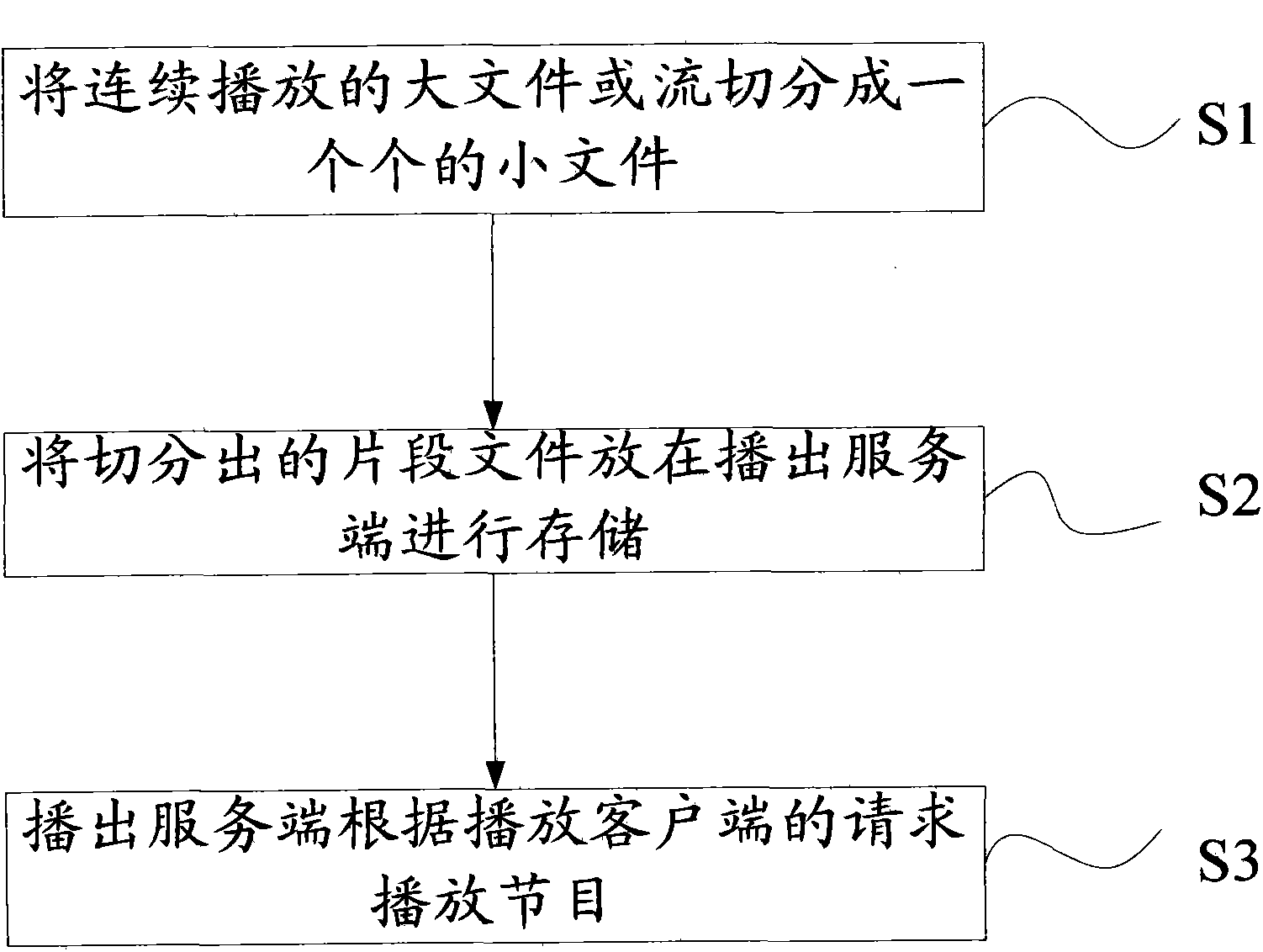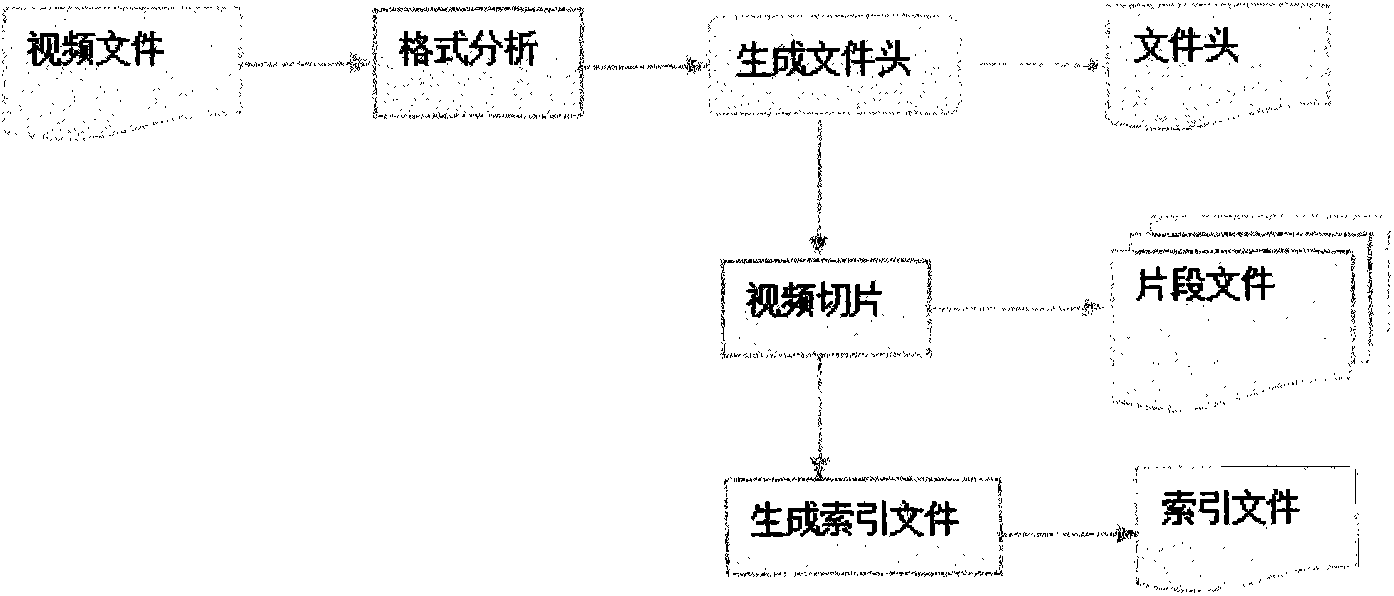Stream media broadcasting method and system
A streaming media and file technology, applied in the streaming media field, can solve problems such as unfavorable CDN acceleration, unfavorable load balancing, and difficulty in moving large files quickly, and achieve the effect of convenient and fast transmission, load balancing, and easy moving.
- Summary
- Abstract
- Description
- Claims
- Application Information
AI Technical Summary
Problems solved by technology
Method used
Image
Examples
Embodiment Construction
[0040] The above and other technical features and advantages of the present invention will be described in more detail below in conjunction with the accompanying drawings.
[0041] At first, explain the technical term that the present invention occurs:
[0042] Playback terminal: the client system for streaming media broadcasting, including various player software installed on smartphones, PCs, and set-top boxes.
[0043] Broadcasting server: the server system for streaming media broadcasting, which sends multimedia data to the playing terminal according to the request of the playing terminal.
[0044] GOP: Video coding grouping, a group contains complete video decoding data, and does not need to refer to data in other groups.
[0045] File header data: the description data of video and audio encoding, which is an important reference for the playback terminal to decode.
[0046] Fragment file: A small file split from a large file. Each small file contains one or more complet...
PUM
 Login to View More
Login to View More Abstract
Description
Claims
Application Information
 Login to View More
Login to View More - R&D
- Intellectual Property
- Life Sciences
- Materials
- Tech Scout
- Unparalleled Data Quality
- Higher Quality Content
- 60% Fewer Hallucinations
Browse by: Latest US Patents, China's latest patents, Technical Efficacy Thesaurus, Application Domain, Technology Topic, Popular Technical Reports.
© 2025 PatSnap. All rights reserved.Legal|Privacy policy|Modern Slavery Act Transparency Statement|Sitemap|About US| Contact US: help@patsnap.com



